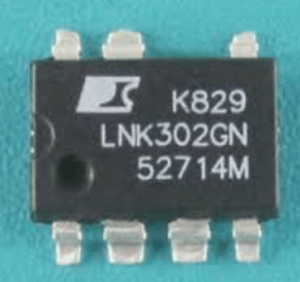
Power Management Integrated Circuits ( PMICs) are specialized chips designed to manage, regulate, and distribute electrical power in electronic systems. They play a critical role in modern electronics, ensuring efficient energy use, extending battery life, and maintaining system stability. PMICs are ubiquitous in devices ranging from smartphones and laptops to automotive systems and industrial equipment.
Table of Contents
Toggle2. Core Functions of PMICs
PMICs integrate multiple power-related functions into a single chip. Key responsibilities include:
- Voltage Regulation: Convert input voltages (e.g., from batteries or adapters) to stable output voltages required by components like CPUs, memory, and sensors.
- Battery Management: Monitor charge/discharge cycles, implement safety protocols, and optimize charging efficiency for Li-ion, Li-polymer, and other battery types.
- Power Sequencing: Control the order in which different voltages are applied during system startup/shutdown to prevent damage.
- Energy Efficiency: Use techniques like dynamic voltage scaling (DVS) and low-power sleep modes to minimize energy waste.
- Protection Circuits: Guard against over-voltage, under-voltage, over-current, and thermal overload.
3. Key Components of PMICs
A typical PMIC integrates the following subsystems:
- DC-DC Converters:
- Buck Converters: Step down voltage (e.g., 12V to 1.2V for a CPU).
- Boost Converters: Step up voltage (e.g., 3.7V from a battery to 5V for USB).
- Buck-Boost Converters: Handle fluctuating input voltages (common in battery-powered devices).
- Low-Dropout Regulators (LDOs): Provide clean, low-noise power for noise-sensitive components like analog sensors.
- Battery Chargers: Support fast charging (e.g., USB Power Delivery, Qualcomm Quick Charge) while managing heat and safety.
- Power Switches: Enable/disable power rails to peripherals (e.g., cameras, displays).
- Fuel Gauges: Estimate remaining battery capacity using algorithms like Coulomb counting.
4. Applications of PMICs
PMICs are essential in nearly every electronic system:
- Consumer Electronics:
- Smartphones: Manage power for displays, processors, 5G modems, and wireless charging.
- Wearables: Optimize microamp-level power consumption for devices like smartwatches.
- Automotive:
- Electric Vehicles (EVs): Balance high-voltage battery packs and power infotainment/ADAS systems.
- Legacy Vehicles: Control lighting, sensors, and engine control units ( ECUs).
- Industrial IoT:
- Enable energy harvesting (solar, thermal) for remote sensors.
- Provide robust power solutions for harsh environments.
- Cloud Computing:
- Manage power delivery in servers and GPUs for data centers.
5. Design Considerations for PMICs
When selecting or designing a PMIC, engineers must balance:
- Efficiency: High efficiency (e.g., >90%) reduces heat and extends battery life.
- Size: Miniaturization is critical for wearables and smartphones (e.g., wafer-level packaging).
- Noise: Minimize electromagnetic interference (EMI) for sensitive analog/RF circuits.
- Thermal Performance: Heat dissipation strategies (e.g., thermal pads, heat sinks).
- Integration Level: System-on-Chip (SoC) vs. discrete solutions.
6. PMIC Architectures
- Analog PMICs: Use traditional control loops (e.g., pulse-width modulation) for cost-sensitive applications.
- Digital PMICs: Incorporate microcontrollers for programmable control, enabling real-time adjustments via I²C/SPI.
- Hybrid PMICs: Combine analog and digital control for flexibility and efficiency.
7. Emerging Trends in PMIC Technology
- Wide-Bandgap Semiconductors: Adoption of GaN (Gallium Nitride) and SiC (Silicon Carbide) for high-frequency, high-efficiency converters.
- AI-Driven Power Management: Use machine learning to predict load demands and optimize power allocation.
- Energy Harvesting Integration: Support for ambient energy sources (light, vibration, RF) in ultra-low-power devices.
- Heterogeneous Integration: 3D packaging to co-locate PMICs with processors/sensors, reducing parasitic losses.
8. Challenges in PMIC Development
- Heat Dissipation: Managing thermal loads in compact devices.
- Miniaturization: Balancing performance with shrinking footprints.
- Complexity: Meeting diverse power requirements in multi-core processors (e.g., smartphones with 10+ voltage rails).
- Safety Compliance: Adhering to standards like ISO 26262 (automotive) and IEC 62368 (consumer electronics).
9. Leading PMIC Manufacturers
- Texas Instruments: Known for high-performance automotive and industrial PMICs.
- Qualcomm: Integrates PMICs with Snapdragon processors for smartphones.
- Analog Devices: Specializes in precision power solutions.
- Infineon: Focuses on automotive and energy-efficient designs.
10. Future Outlook
PMICs will continue to evolve alongside advancements in AI, 5G, and autonomous systems. Key areas of growth include:
- Autonomous Vehicles: PMICs for LiDAR, radar, and AI accelerators.
- Edge AI: Ultra-low-power PMICs for always-on smart devices.
- Sustainable Energy: PMICs enabling next-gen solar/wind energy systems.
Conclusion
Power Management ICs are the unsung heroes of modern electronics, enabling smarter, safer, and more efficient energy use. As technology advances, PMICs will play an even greater role in powering innovations across industries. Engineers and designers must stay ahead of trends in materials, integration, and intelligent control to meet the demands of tomorrow’s systems.
- Everything You Need To Know About Limit Switch - May 21, 2025
- Everthing You Should Know About Rheostat - May 20, 2025
- Everything You Need To Know About Reversing Contactor - May 19, 2025






